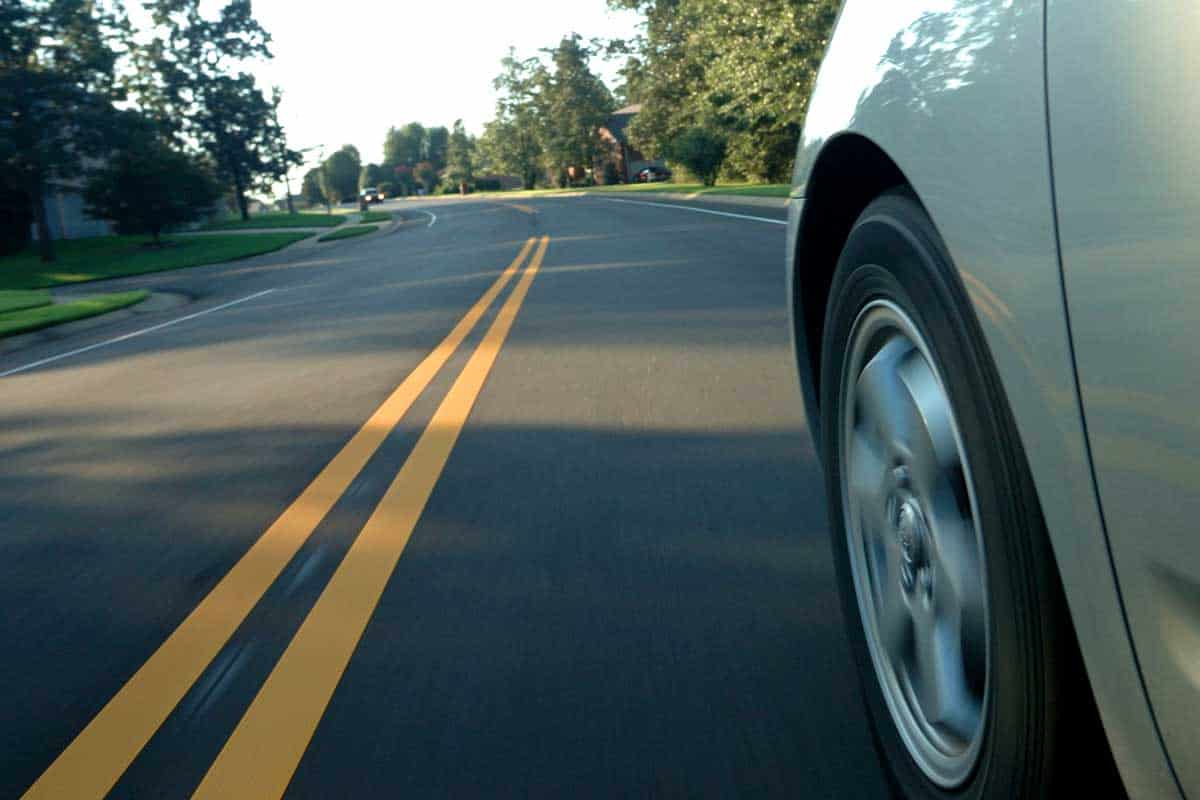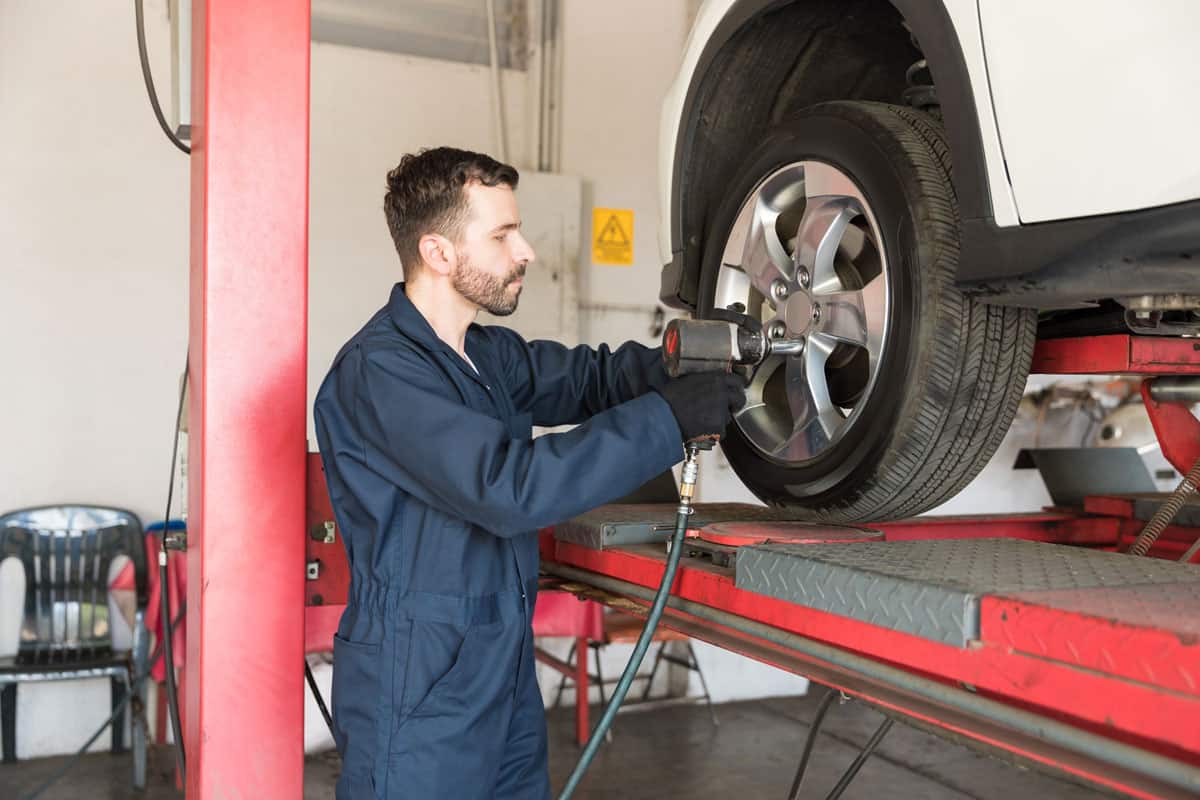 When you’re behind the wheel, you should feel confident your car is traveling where you want it to go. If you start to notice your vehicle veering uncontrollably to the side, then you need to get it checked immediately. For your convenience, we’ve researched this issue so you could better understand what’s going on with your vehicle.
When you’re behind the wheel, you should feel confident your car is traveling where you want it to go. If you start to notice your vehicle veering uncontrollably to the side, then you need to get it checked immediately. For your convenience, we’ve researched this issue so you could better understand what’s going on with your vehicle.
The most common reasons cars pull in one direction include:
- Tire alignment issues
- Tire pressure is uneven
- Faulty wheel bearing
- Steering system problems
Below, we’ll run through each of these issues in detail. This post will also share valuable information on how to get your steering, “straightened out.”
As always, the information is provided for educational and entertainment purposes only. Never rely on online information when it comes to mechanical issues with your vehicle. If you notice your car pulling to one direction, call a qualified mechanic immediately and get the car inspected by a professional.
Common Reasons Your Car Pulls In One Direction
For an accurate diagnosis of your car’s issue, we always recommend speaking with a licensed mechanic. In this section, however, we’ll explore four of the most common reasons cars drift in one direction.
Can Unbalanced Tires Cause A Car To Pull In One Direction?
Yes, your car could be drifting in one direction due to unbalanced tires. This is one of the most common reasons for this issue. In addition to pulling your car in one direction, unbalanced tires could cause your steering wheel to shake.
If you hear a rubbing noise from your front tires, however, that’s most likely a separate problem. VEHQ put together an entire post on this issue you could find on this link.
Can Poor Tire Pressure Cause A Car To Pull To The Side?
Another potential reason your car could be veering to one side is that the tire pressure is off. If one or more of your tires has improper PSI levels, it could cause your car to drift in one direction and adversely affect the tire alignment.
One of the easiest ways to check for under or overinflated tires is to inspect your tires for wear. Typically, underinflated tires have wear marks on the outside, and overinflated tires have marks down the tire’s center.
A few other signs that your car has a tire pressure issue include:
- Your car needs more gas to travel the same mileage.
- You hear a “flapping” noise while driving.
- Your car takes longer to reach a complete stop.
- It’s increasingly difficult to turn your car with precision.
Can A Bad Wheel Bearing Cause A Car To Pull To One Side?
It is possible that a bad wheel bearing could cause your car to pull to one side. If this is the case, however, you’ll probably notice a few additional symptoms.
Most often, people who have wheel bearing issues notice an intense “grinding” sound before their car starts pulling to one side. You might also feel your steering wheel vibrate while you’re driving.
If you notice any of these symptoms, please stop driving and call your mechanic for a diagnostic. Driving with a faulty wheel bearing is a hazardous scenario.
Although prices vary depending on your car’s make and model, a standard wheel bearing replacement costs between $300 – $450.
Can Steering System Issues Cause A Car To Drift?
Although not as frequent as the other issues listed above, your car could be drifting due to a steering system issue. Like a bad wheel bearing, you’ll probably notice other symptoms before your vehicle starts pulling to one side.
When there’s an issue with the steering system, you’ll often hear a sharp grinding sound, especially when you turn your wheel. You might also notice puddles of steering fluid at the back of the motor or the smell of burning oil.
All of these are warning signs that there are issues with the car’s steering gearbox. Be prepared to pay about $1,000 if you have to replace one of these units.
How To Avoid & Fix A Drifting Car

Now that you know the four main reasons cars pull in one direction, it’s time to go over a few maintenance tips. Incorporating these strategies into your car care routine can significantly reduce the odds of ever dealing with this issue.
How Often Should I Get A Wheel Alignment?
At a minimum, you should schedule a wheel alignment once every two years. Depending on where and how often you drive, however, you might want to consider a wheel alignment once per year.
For instance, people who frequently drive on poorly paved roads should get alignments regularly. You’ll also want to consider getting an alignment if you’ve been accidentally hitting a lot of pesky potholes (especially in the snowy season!).
If you’d prefer to schedule your wheel alignments by miles traveled, try to get an alignment at least once every 10,000 miles.
How Do I Know If My Car Needs An Alignment?
Although the numbers above are suitable for general maintenance, you should always scan your car for alignment issues to determine whether it needs an adjustment. In addition to drifting to one side, here are a few signs that signal it’s time for a tire alignment:
- The steering wheel or seat starts vibrating while you’re driving.
- You notice your tires are wearing at uneven rates.
- Your steering wheel is slightly off in its normal resting position.
- You can hear your tires give off a squealing sound.
How Much Does An Alignment Cost?
Typically, you will pay between $50 – $75 for a tire alignment on a two-wheel-drive car. That cost goes up to between $100 – $150 for a four-wheel-drive vehicle. It’s not unheard of, however, for higher-end brands to cost in the $200-range.
Don’t Forget To Get Regular Tire Rotations
New drivers sometimes don’t understand the differences between wheel alignments and tire rotations. Although regular rotations help with alignment issues, you should keep these two jobs separate in your mind.
Tire rotation involves switching the places of your current tires. Regular tire rotations help evenly distribute wear-and-tear, which could stave off alignment issues and improve the longevity of your wheels.
For optimal performance, try to schedule a tire rotation every 6,000 miles. Although prices could vary, most mechanics offer a four-tire rotation for between $25 – $50.
You can learn more about wheel rotations on this previous VEHQ post.
Break Out Your Trusty Tire Pressure Gauge
An easy way you could reduce the possibility of alignment issues is to gauge and adjust your car’s tire pressure at home. Aim to check your tire pressure once per month for the best results.
Tire pressure is officially measured in “pounds per square inch,” which is often abbreviated “PSI.” Although most cars recommend a PSI in the 30-range, you must check your manufacturer’s recommended PSI levels. You can usually find the optimal PSI for each tire on a sticker placed on the drivers-side door.
Before you take your car’s tire pressure, please make sure all of your tires are cool. You won’t get accurate PSI reading if your tires are warm.
Next, take off the valve cap on one tire and insert your tire pressure gauge. Jot down the PSI reading on a piece of paper and continue with the other four cars.
Once you’ve got all of your PSI readings, compare them with the factory recommended numbers. You can then adjust each tire’s PSI with an air compressor.
If you’re interested, here’s a standard tire pressure gauge put out by Rhino USA.
Click this Amazon link for more details.
You could also pick up this hi-tech digital tire pressure gauge by AstroAI.
Find out more info on this Amazon link.
If you want more info on checking tire pressure, please check out this previous VEHQ post.
When Your Car Is Drifting, Drive Straight To A Mechanic!

Although tire misalignment is the most common reason cars pull in one direction, there could be other potential issues. No matter what the problem is, you must bring your vehicle to a certified mechanic ASAP. Only a qualified mechanic can diagnose and treat this serious issue.


